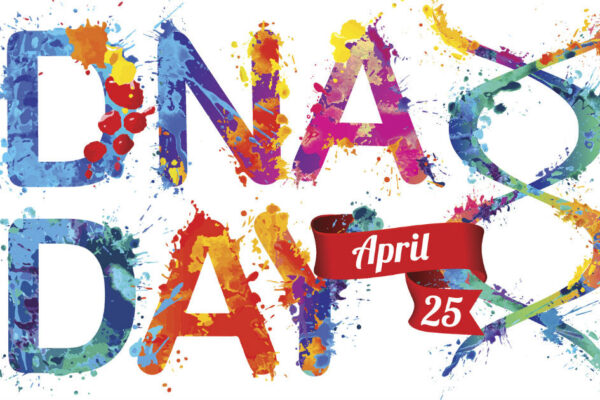Genealogy Do-Over – Step 1 Topics:
1) Setting Previous Research Aside, and 2) Preparing to Research

Click here for a list of ALL Genealogy Do-Over Topics.
Click here to download a PDF version of Step 1.
Before we review the Step 1 topics, I want to provide a little pep talk since many participants may feel discouraged and overwhelmed. Remember: while The Genealogy Do-Over is a project-based learning initiative to improve genealogy research skills, you should be having fun. You should look forward to trying new approaches with each step.
- “When are we going to start research?” has been a common question during The Genealogy Do-Over. Some participants wanted to dive right in and get online and look for stuff. My belief is that we need to lay a firm foundation and take our time before we set out on our search. A solid base of goals, procedure and tools will carry us through to the end and should not be improvised as we go along.
- “There’s too much information; I’m drowning!” is also something I see posted on The Genealogy Do-Over Facebook Group. That is why you are here at The Genealogy Do-Over: to gain skills to better manage the flood of data. Keep in mind that Big Data is something we as genealogists will continue to deal with in the future and the amount of data increases each month and each year. Learn to work smarter and determine the best data for your research.
Finally, remember that what I have put together for The Genealogy Do-Over is based on my discoveries in changing my research habits over the past year. Your mileage may vary which means that what works for me might not necessarily work for you. Feel free to make changes to the program by using different tools and different procedures. Just be true to your Base Practices and Guidelines (we will cover this in Step Two) and we will all likely arrive at the same destination: better genealogical research.
Setting Previous Research Aside
For many participants in The Genealogy Do-Over this can be the most difficult step in the entire journey: breaking with previous research materials and with previous practices. Remember that how you decide to “break up” with your research is your decision. Here are some guidelines:
- Binders, folders and papers: If it is not feasible to set them aside, you will need to be on your best behavior and resist the temptation to automatically consult these items.
- Reserving specific items: It makes no sense whatsoever to spend money (and waiting time) on records that you acquired previously. Make sure they are easily accessible and, when using them, you only refer to the actual data in the record . . . and do not look at any post it notes or notes you have written in the margins.
- Digital holdings: These files are the easiest to handle and move to a holding area, but at the same time their ease-of-access make them prime candidates for a “research crutch.” Do not be tempted to go back to old research in these online files, if possible. Trust in the process and that starting from scratch and looking at records from a new perspective will bring success in your research.
Easy-peasy, right? More like “easier said than done” . . .
When I started doing my own genealogy research over again, I moved all my paper files into banker’s boxes (a cardboard box used for document storage). I did hold on to several paper copies of vital records as well as some photos. In addition, I placed all digital files into a HOLD folder that, I am proud to say, I was not tempted to use!
Preparing to Research
It may sound odd for many of us to do “prep work” before researching. However, I found that if I took time to prepare my workspace and my mind for research, I had much better results.
For me, this means I will no longer research at 2:00 am if I am tired or half-asleep. It also means that I will no longer say to myself, “Oh I have 15 minutes before the roast in the oven is done, I’ll look for Grandpa some more.” One of my biggest problems in the past was not starting or finishing the research process properly. Moreover, the finish turned out to be just as important for me: with a good ending to a research session, I would know exactly where to pick up the next time I started.
So think about how you have researched in the past in terms of time, location, tools used, etc. Consider making some changes. Write down some research “warm up” exercises and try them once we get to the research phase. Make a list of items that you must have available when you are researching (a copy of Evidence Explained, a spiral notebook, your copy of Evernote open on screen, etc.).
Step 1 To Do List – Full Do-Over Participants
- Setting Previous Research Aside: If you are sitting on a considerable amount of paper files and binders, try to sort through them and quickly pull those records that took considerable time, effort and money to order or collect. Another option is to simply put everything aside and then when you reach a point in your research where they are needed, place the task of locating that record on your To Do list. For digital files, try the same approach of moving them to a HOLD area. If you do not feel confident in your tech skills (and fear losing items or causing an error with your database software), simply commit yourself to not accessing these files unless absolutely necessary.
- Preparing to Research: Think about how you have researched in the past in terms of time, location, tools used, etc. Consider making some changes. Write down some research “warm up” exercises and try them once we get to the research phase. Make a list of items that you must have available when you are researching (a copy of Evidence Explained, a spiral notebook, your copy of Evernote open on screen, etc.)
Step 1 To Do List – Review or “Go-Over” Participants
- Setting Previous Research Aside: Work on organizing files, both digital and paper. Then locate essential documents that prove a relationship and either set them aside for future review or create an index . . . sort of like a Top 20 or Top 50 Document list.
- Preparing to Research: Make a list of you current research habits including when you research (time of day or week), the processes you use, etc. Review your list and determine if there are areas you would like to improve.
©2020, copyright Thomas MacEntee. All rights reserved.



